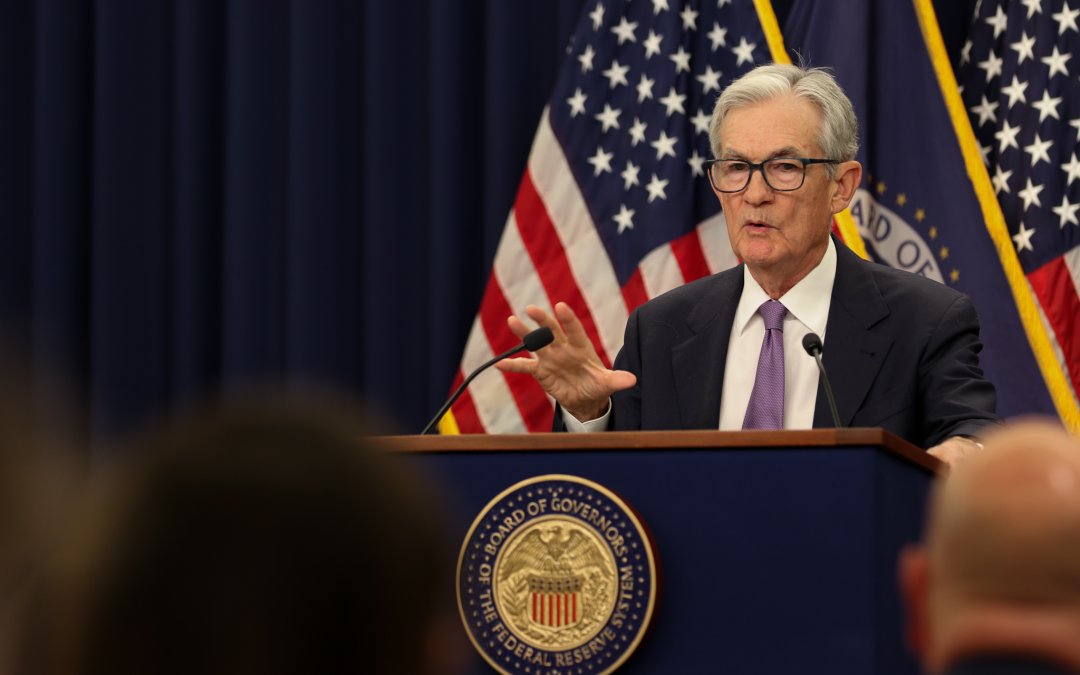WASHINGTON – Federal Reserve Chair Jerome Powell announced a quarter point rate cut on Wednesday, marking the second cut of this year.
The reduction brings the federal funds rate to the 3.75% to 4.00% range, closer to what the Fed considers its neutral rate. The last time the benchmark rate fell below 4.00% was in late 2022.
In tandem with its rate cut decision, the Fed also announced it will halt balance sheet runoff beginning Dec. 1, ensuring reserves do not run too low and to support liquidity.
According to David Wessel, director of the Hutchins Center on Fiscal and Monetary Policy at the Brookings Institution, the end of this quantitative tightening process marks a “milestone.”
The move seeks to prevent the kind of market turmoil seen in 2019, when a shortage of bank reserves triggered a spike in the overnight lending rate and forced the Fed to intervene.
In announcing the rate cut, Chair Powell cited the Fed’s dual mandate of maximum employment and stable prices, noting that “conditions in the labor market appear to be gradually cooling, and inflation remains somewhat elevated.”
On the labor market, Powell said unemployment remains low at 4.3% as of August but job gains have also slowed. The Fed attributes this trend to a weaker labor‐force participation rate, lower immigration and softer demand for workers.
Powell noted the effect of tariffs on inflation will be “relatively short-lived,” but the Fed will continue to monitor the risk of persistent inflationary pressures that may arise from a “one-time price-level shift.”
“In the near term, risks to inflation are tilted to the upside and risks to employment to the downside — a challenging situation,” Powell said. “There is no risk-free path for policy as we navigate this tension between our employment and inflation goals.”
The decision was not unanimous, as some officials remain focused on the weakened labor market, while others caution against further quantitative easing.
Governor Stephen Miran wanted a 50-basis-point cut, consistent with his view in the September meeting and overall stance that current monetary policy is too restrictive.
Kansas City Fed President Jeffrey Schmid preferred to not cut rates further, given that inflation remains above the Fed’s target of 2%.
While Powell said the employment and inflation outlook did not deviate significantly from the September meeting, the government shutdown forced the Fed to make a decision with only partial data.
The lapse in appropriations has shuttered agencies like the Bureau of Economic Analysis (BEA) and the Bureau of Labor Statistics (BLS), which provide key sources of data to the Federal Open Market Committee (FOMC).
Some examples of metrics that inform the Fed’s policymaking and were impacted by the shutdown include the unemployment rate and the Personal Consumption Expenditures (PCE) Price Index, which were last released in August.
While private or alternative data offer some insight, Powell stressed they are not adequate substitutes for official government statistics. Powell described the situation as akin to “driving in fog.”
“I don’t think we’ll be able to have a very granular understanding of the economy … while this data is not available,” Powell said.
Looking ahead, Powell noted “strongly differing views” on the path ahead, cautioning against cutting rates once more before year end.
In a statement to Medill News Service, Wessel noted “perhaps stronger differences than we’ve seen in the recent past” on the path forward.
“A further reduction in the policy rate at the December meeting is not a foregone conclusion — far from it,” Powell said. “Policy is not on a preset course.”


